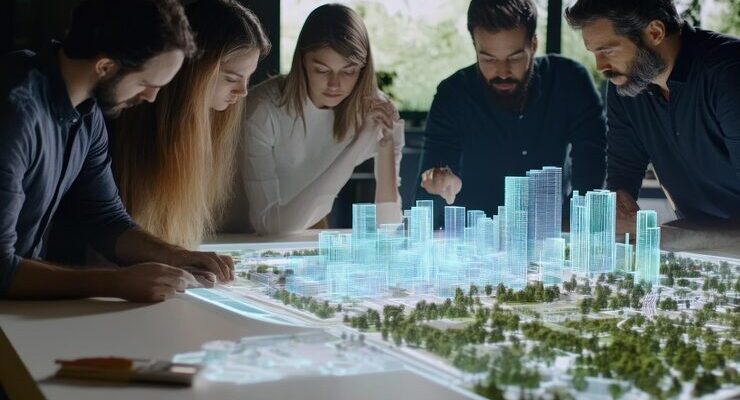Cities are living, breathing entities that constantly evolve. As populations grow and urban lifestyles become more complex, the need for well-planned infrastructure has never been greater. This is where municipal engineering services and municipal urban engineering play a pivotal role in shaping the cities of tomorrow. By integrating innovative design, technology, and sustainability, municipal engineers are transforming urban landscapes into smarter, more efficient, and more livable spaces.
Understanding Municipal Engineering Services
At its core, municipal engineering focuses on planning, designing, and maintaining the essential infrastructure of a city. This includes roads, bridges, drainage systems, water supply, sewage networks, and public spaces. Municipal engineering services ensure that these systems function efficiently, safely, and sustainably.
Good municipal engineering doesn’t just handle today’s needs; it anticipates future challenges. For instance, engineers design drainage systems that can withstand heavy rainfall and prevent flooding, or traffic systems that reduce congestion as the population grows. Essentially, municipal engineering forms the backbone of urban development.
The Role of Municipal Urban Engineering in City Planning
Municipal urban engineering goes a step further by combining civil engineering principles with urban planning strategies. It focuses not only on the construction of infrastructure but also on how these systems interact within the urban environment. This includes planning neighborhoods, parks, and transport networks to improve quality of life, reduce environmental impact, and enhance connectivity.
Urban engineering considers the social, economic, and environmental aspects of city life. For example, well-designed public spaces can encourage community engagement and physical activity, while smart traffic systems can cut down pollution and commuting time. By integrating technology and innovative design, municipal urban engineering is creating cities that are more responsive to the needs of their residents.

Smart Cities: A Vision for the Future
One of the most exciting developments in urban planning is the rise of smart cities. These cities use technology to monitor and manage infrastructure in real time. Sensors can track traffic flow, detect water leaks, and monitor air quality, enabling city planners to make data-driven decisions.
Municipal engineering services are central to implementing smart city solutions. Engineers design the underlying infrastructure that supports these technologies, ensuring that data collection, communication networks, and automated systems operate seamlessly. With smart urban planning, cities become more efficient, sustainable, and safer for everyone.
Sustainability and Resilience in Urban Design
Modern cities face numerous challenges, including climate change, resource scarcity, and rapid population growth. Municipal urban engineering addresses these issues by promoting sustainable and resilient infrastructure. This might involve using eco-friendly materials, designing energy-efficient public buildings, or creating green spaces that absorb stormwater and reduce urban heat.
Resilient cities are capable of withstanding natural disasters, economic shifts, and social changes. Municipal engineering ensures that infrastructure is flexible, adaptable, and capable of supporting communities even in challenging times.
Community-Centered Urban Development
A city is more than just roads and buildings; it’s a community. Municipal engineering services prioritize projects that enhance public welfare. From creating safe pedestrian pathways and cycle lanes to designing accessible parks and recreational areas, urban engineers focus on the people who inhabit these spaces.
Engaging with local communities during planning and design helps ensure that infrastructure projects meet real needs. This collaborative approach strengthens civic participation and builds a sense of ownership among residents, making cities not only functional but also inclusive and vibrant.
Challenges and Opportunities
Despite its importance, municipal urban engineering faces several challenges. Limited budgets, political constraints, and rapid urbanization can hinder effective planning. However, these challenges also present opportunities for innovation. Engineers are exploring cost-effective materials, modular designs, and sustainable construction techniques to overcome these hurdles.
Moreover, technological advancements, such as Geographic Information Systems (GIS) and Building Information Modeling (BIM), allow engineers to plan with greater precision and efficiency. By embracing these tools, cities can grow smarter and more sustainable while minimizing waste and disruption.
Conclusion: Shaping the Cities of Tomorrow
Municipal engineering services and municipal urban engineering are critical to the future of urban development. By combining infrastructure expertise, innovative planning, and community engagement, engineers are transforming cities into smarter, safer, and more sustainable places to live.
As cities continue to grow, investing in these services ensures that urban areas can meet the needs of their residents while preparing for the challenges of tomorrow. With thoughtful design and strategic planning, we can create cities that are not only functional but also thriving, resilient, and inclusive.
For projects that aim to redefine urban spaces with precision and expertise, companies like Atlas Engineering exemplify the impact of professional municipal engineering services in shaping modern cities.











Comments